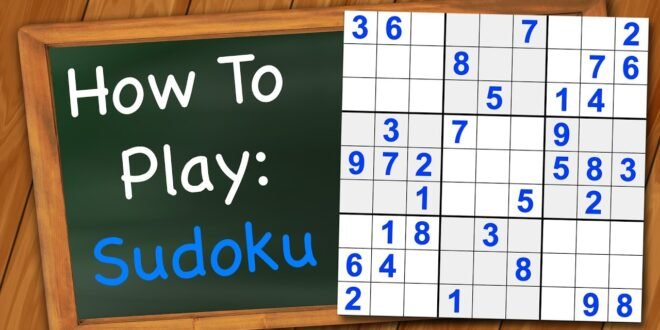Sudoku, a game that blends the allure of numbers with the intrigue of puzzles, has captivated minds worldwide. Originating from Japan, its name translates to ‘single number,’ a principle that underpins the entire game. It’s not just a pastime but a brain exercise that enhances logic and problem-solving skills. This guide is designed for beginners and intermediate players alike, aiming to demystify the strategies and rules of Sudoku, ensuring that by the end of this read, you’ll be equipped with the knowledge to tackle Sudoku puzzles with confidence.
Understanding the Basics
At its core, Sudoku is played on a 9×9 grid, subdivided into nine 3×3 squares or ‘regions.’ The objective is simple yet challenging: fill every row, column, and region with numbers from 1 to 9. The catch? Each number can appear only once in each row, column, and region. The puzzle starts with some cells prefilled with numbers, serving as clues. The difficulty of the puzzle is usually determined by the number and placement of these given numbers.
Starting with the Basics: The One Rule
The singular rule of Sudoku might seem straightforward, but its implications are vast. Every number from 1 to 9 must appear:
- Once in every row
- Once in every column
- And once in every 3×3 region
This rule is the key to unlocking the solution to any Sudoku puzzle. It’s the beacon that guides every stroke of the pen or pencil, ensuring that the integrity of the game is maintained.
Strategies for Beginners
1. Scan for Obvious Numbers: Start by looking for numbers that are easily placed. Often, a number can only fit in one spot within a row, column, or region due to the other numbers around it.
2. Use the Process of Elimination: If you’re stuck, look at a single row, column, or region. Determine which numbers are missing, and then see if there’s only one possible place for a number to go based on the other numbers in the grid.
3. Look for Number Patterns: Sometimes, the placement of numbers in two rows or columns can inform you about where a number can go in a third row or column.
Intermediate Strategies
As you grow more comfortable with the basics, it’s time to delve into strategies that can solve even the trickiest puzzles:
1. Naked Pairs/Triples: Sometimes, a pair or trio of numbers can only go in two or three cells within a row, column, or region. If you identify such a pattern, those numbers can’t appear in any other cells within that row, column, or region.
2. X-Wing Strategy: This advanced technique involves looking for rows (or columns) where a number appears only in two spots across two different rows (or columns). If aligned properly, these can inform decisions in other rows or columns.
The Role of Patience and Persistence
Playing Sudoku is as much about mental endurance as it is about logic. The most challenging puzzles often require stepping away and returning with fresh eyes. Persistence pays off, and over time, patterns become more recognizable, and what once seemed insurmountable becomes manageable.
Digital vs. Paper Sudoku
In the digital age, Sudoku has found a new life online and in app form. While the core game remains the same, digital platforms often offer hints, auto-correct features, and the ability to easily correct mistakes. Choosing between paper and digital ultimately comes down to personal preference. Some purists argue that the tactile experience of pencil and paper cannot be replicated, while others appreciate the convenience of digital play.
Conclusion: The Journey Begins
Learning how to play Sudoku is a journey into the world of logic, pattern recognition, and strategic thinking. It’s a game that offers endless challenges, catering to beginners and seasoned players alike. By understanding the basic rules, starting with simple strategies, and gradually exploring more complex techniques, anyone can master Sudoku. Remember, every puzzle solved is a step forward in your Sudoku journey, and every challenge faced enhances your problem-solving skills. Whether you prefer the traditional paper puzzle or the digital version, the world of Sudoku welcomes you with open arms and infinite numbers.
Read Also: How to Pair AirPods
 Inspirescroll
Inspirescroll




